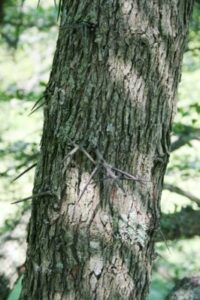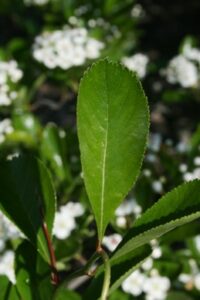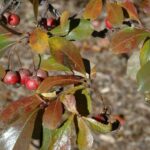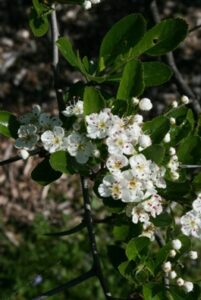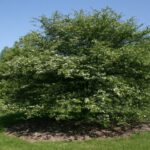Botanical Name:
Crataegus crus-galli
Family Name:
Rosaceae
Description:
Cockspur hawthorn grows as either a large deciduous shrub or small tree with a rounded or flat-topped crown and spreading branches. Wild forms are very thorny, with branched thorns on the trunk and simple straight or curved thorns of 2-3 inches in length on the branches. Thornless varieties are sold for landscaping (C. crus-galli var. inermis). The glossy green leaves are typically long egg-shaped with narrowly wedge-shaped bases and fine serrations along the margins.
Size:
25-35’ tall; 25-35’ spread
Habitat and Range:
Cockspur hawthorn is distributed throughout most of eastern United States and adjacent Canada, extending as far west as Kansas, Oklahoma, and Texas. It prefers sunny habitats, such as open woodlands or savannas, limestone glades, fence rows, or areas along railroads. It can be an early colonizer of abandoned fields or pastures.
Attributes:
Cockspur hawthorn has four-season appeal. Trees produce flat-headed clusters of white flowers in late spring or early summer. Fruits, called haws, ripen to red color in the fall and persist throughout the winter. Autumn leaves turn orange, scarlet, or purple. The flowers emit an unpleasant smell. The tree is susceptible to several diseases, including cedar-hawthorn rust, which can be more of a problem if cedar trees (Juniperus) are growing in the vicinity.
Wildlife Value:
Many bee species visit the flowers, and many other insects feed on the leaves, fruits, and wood. Birds and some small mammals eat the fruits. The dense, thorny branches provide safe nesting habitat for several songbirds.
Did you know?
• The name crus-galli is Latin for leg of a cock (rooster), and it refers to the resemblance between a cock’s spurs and the long-curved thorns along the twigs of this species.
• The loggerhead shrike is reported to use the thorns to impale its prey, which can be smaller songbirds.
Benefits to Our Community (based on carbon dioxide sequestered, storm water runoff avoided, and air pollution removed each year):
Over the next 15 years, this tree will give back $45 worth of benefits to our community.
